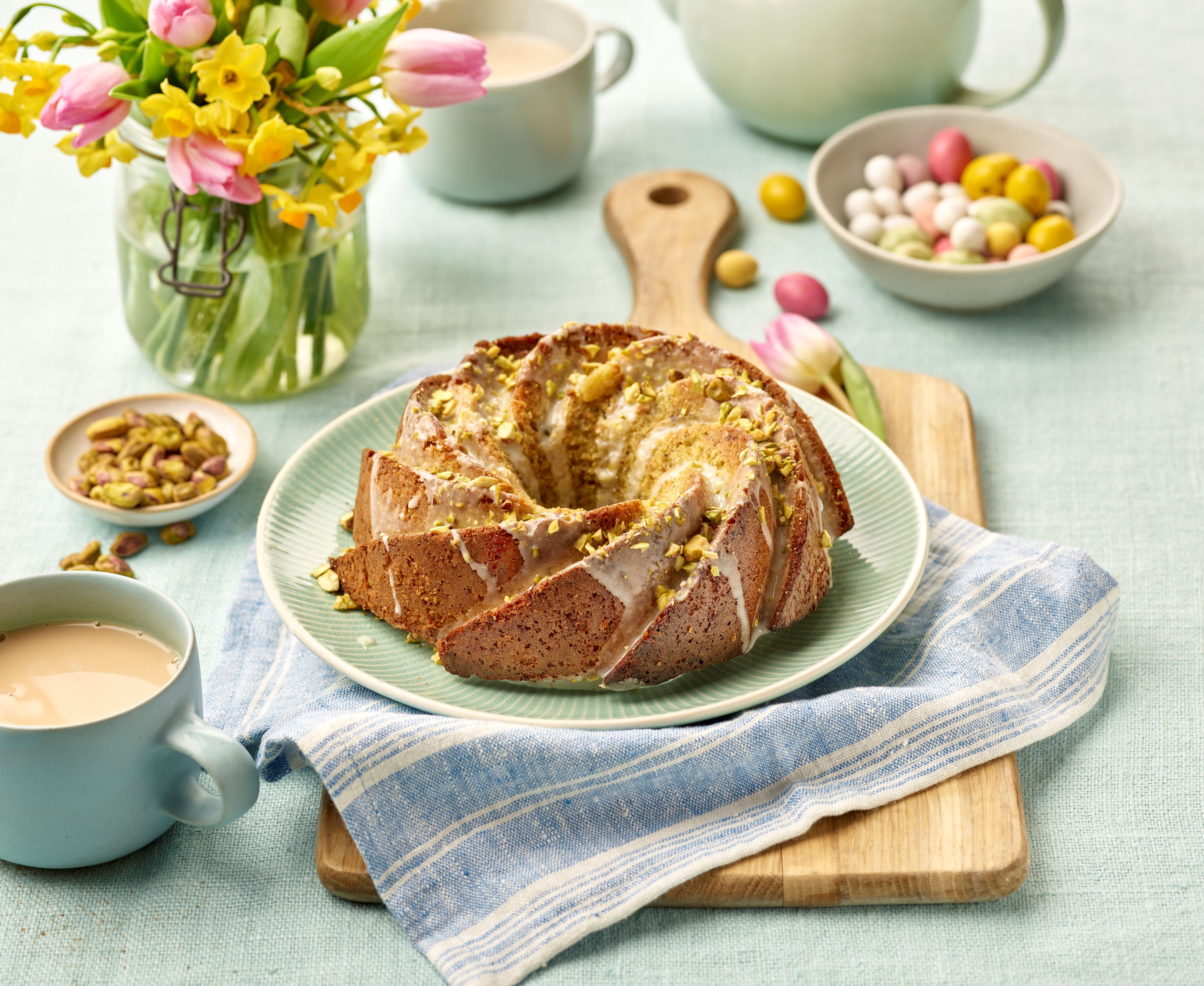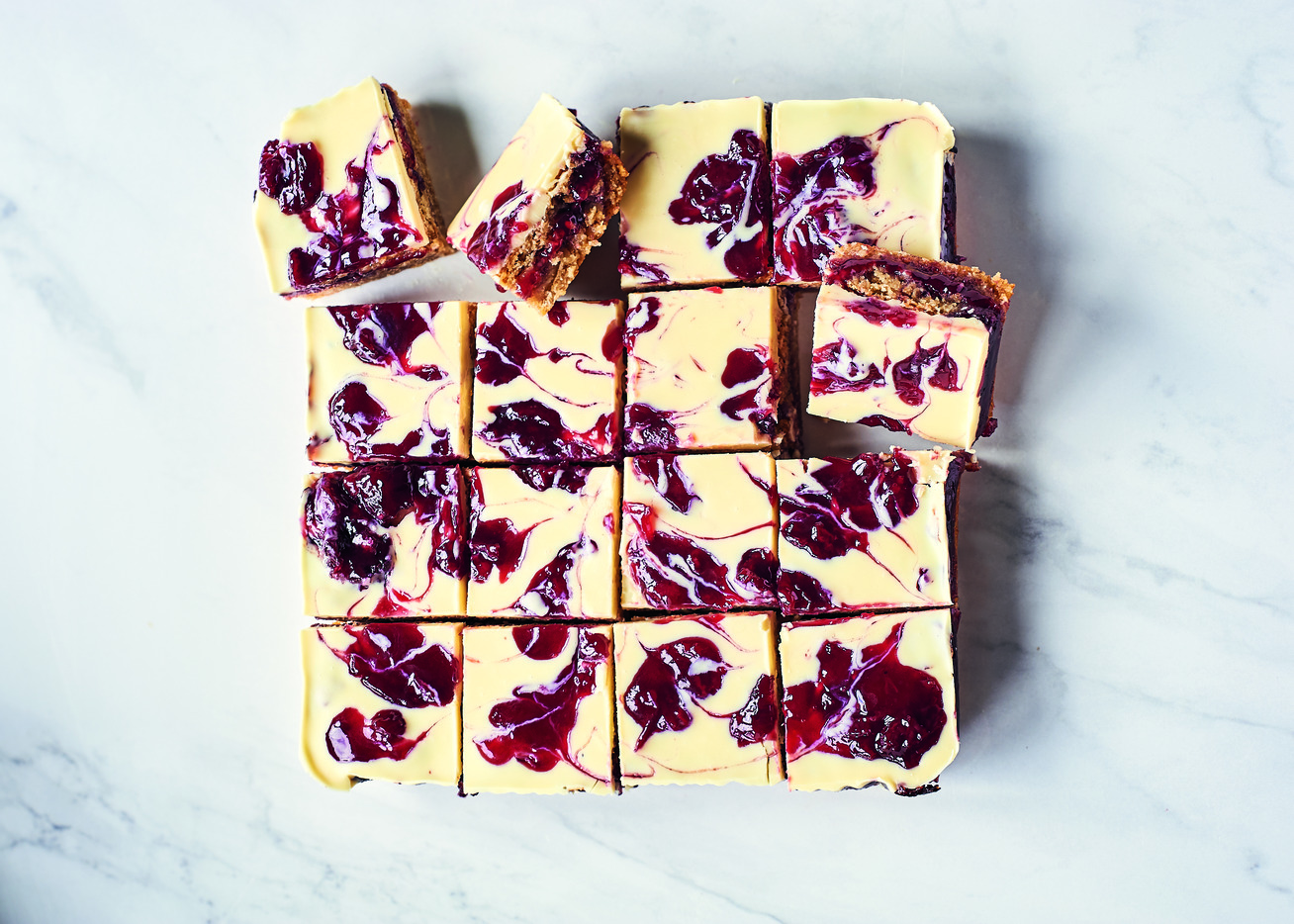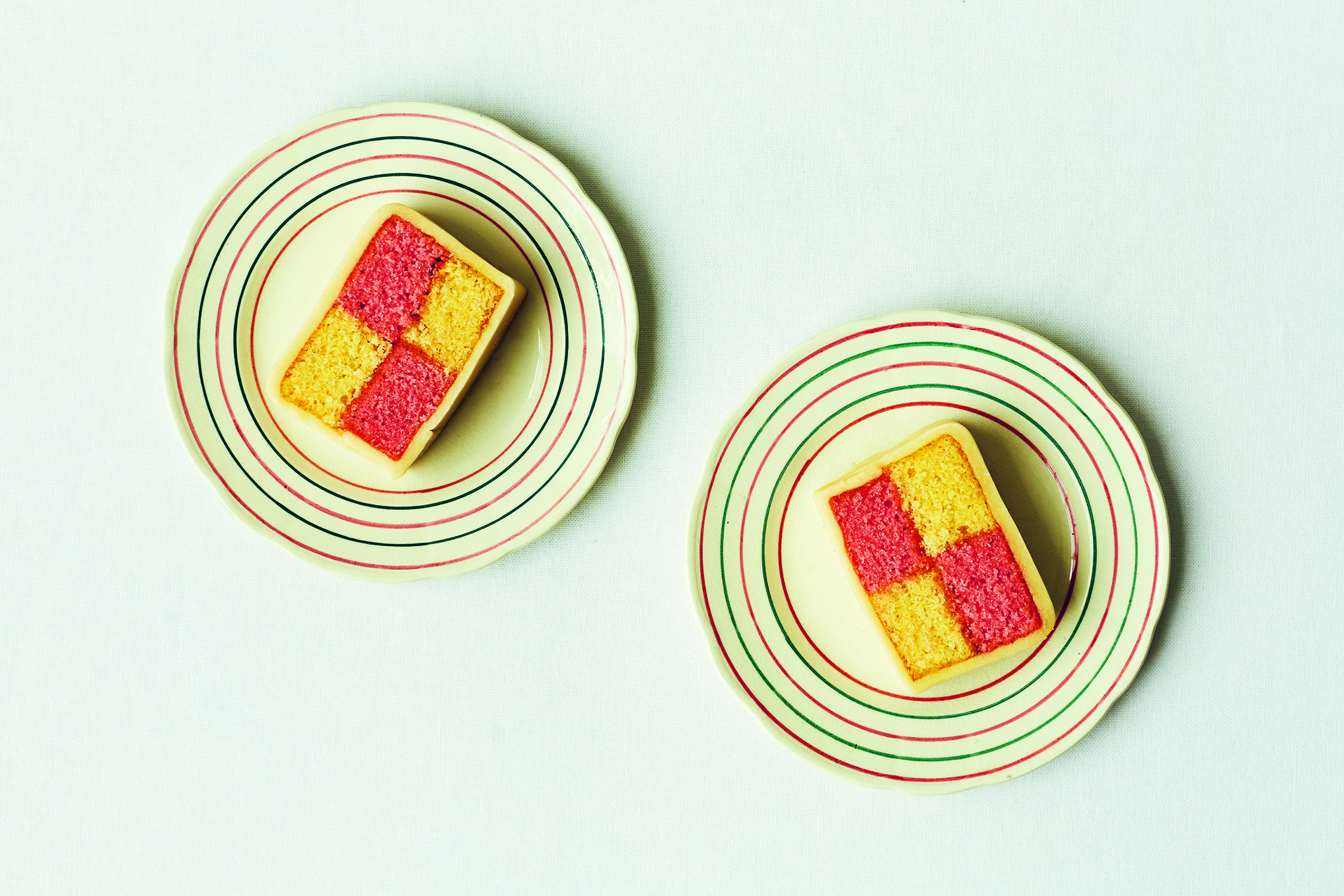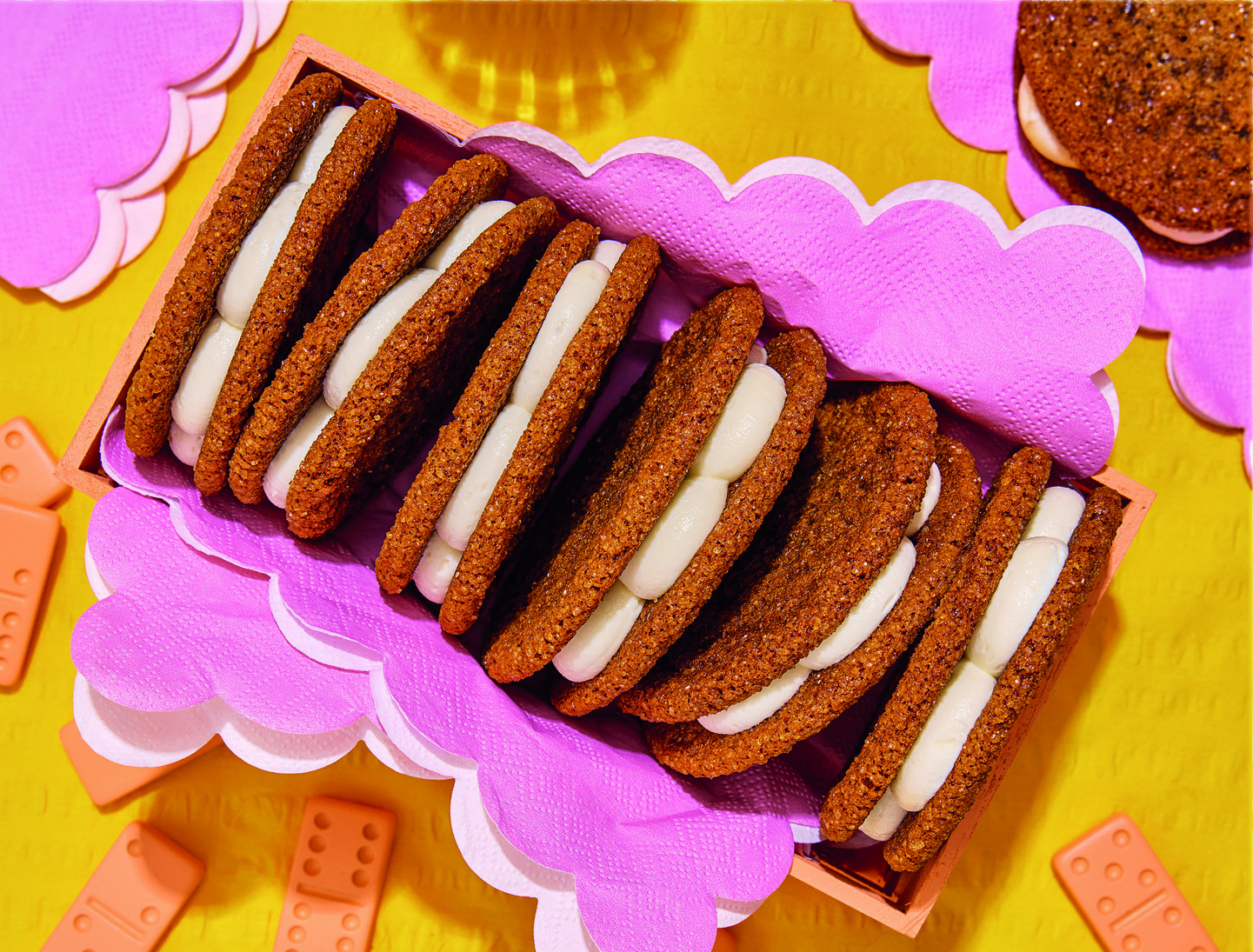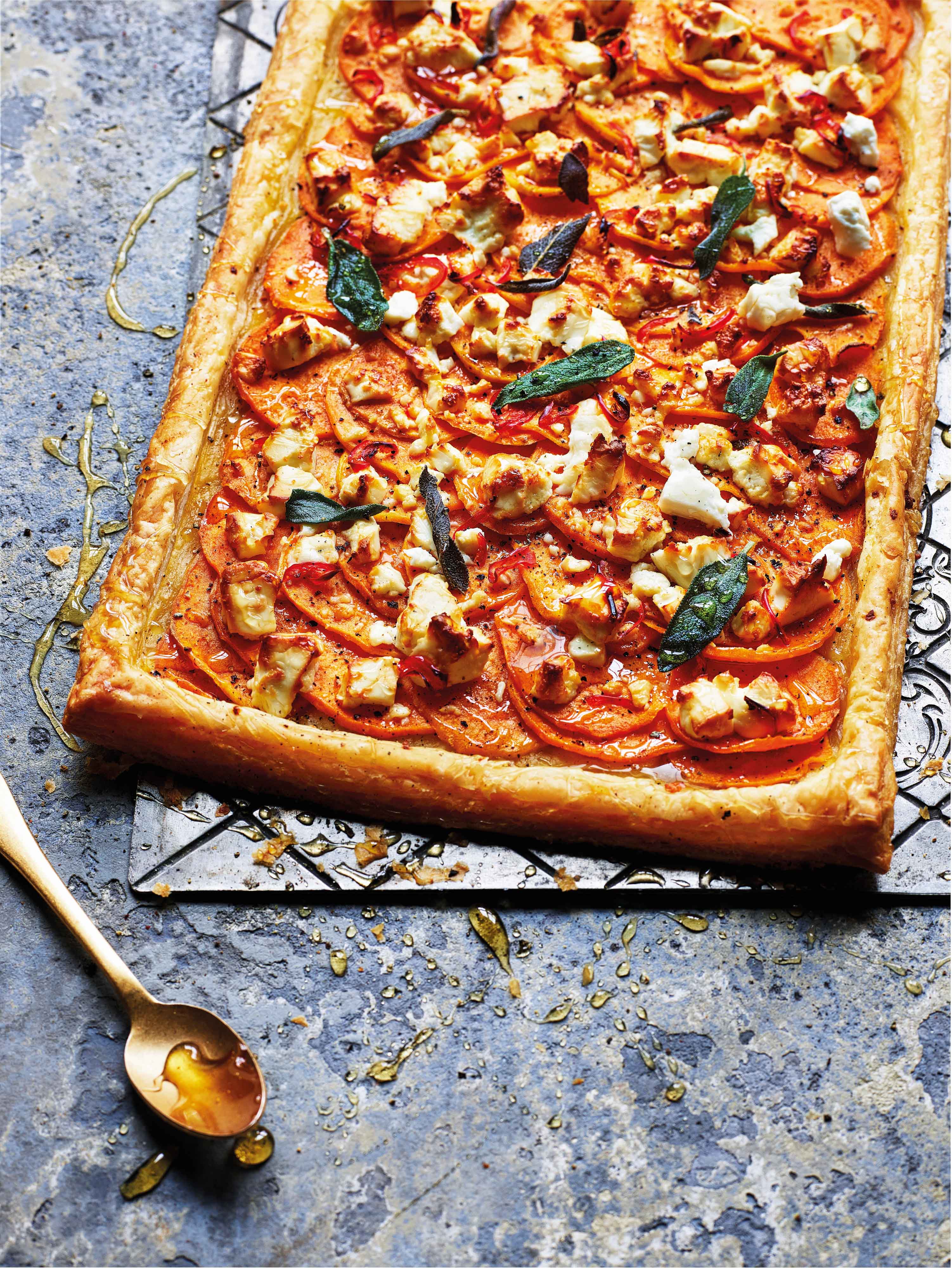Primrose & Lemon Layer Cake
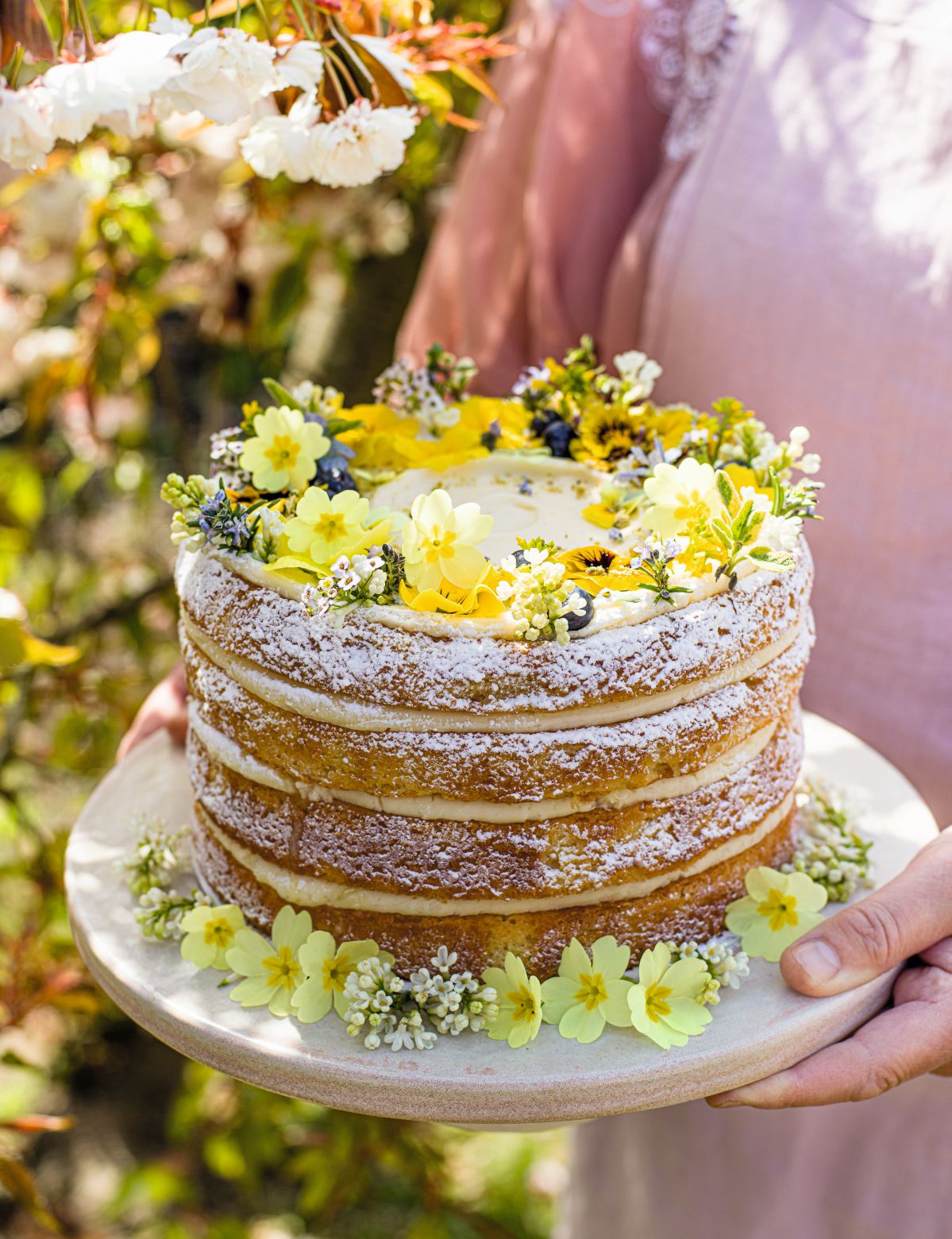
This gooey lemon layer cake is a real spring showstopper! Homemade primrose and lemon curd adds a lovely fragrant flavour, and edible seasonal flowers on top finish it off beautifully
1 hour 30 minutes, plus cooling prep, 35 minutes cook
Serves 12-14
Ingredients
For the sponge:
280g ground almonds
240g self-raising flour, sifted
450g unsalted butter, softened
450g golden caster sugar
8 eggs
100ml lemon curd yogurt
Finely grated zest of 1 unwaxed lemon
Pinch of salt
Primrose & lemon syrup, for brushing (below)
For the primrose & lemon syrup:
2 large handfuls of primrose flowers
½ unwaxed lemon, cut into wedges
100g caster sugar
For the primrose & lemon curd:
3 large eggs
300g caster sugar
100ml primrose & lemon syrup (above)
100g unsalted butter, cubed
For the lemon buttercream:
225g unsalted butter, softened
420g icing sugar, sifted
Finely grated zest of ¼ unwaxed lemon
3 tbsp whole milk
To decorate:
Edible spring flowers, such as primroses, pansies, bellis or violas
Thyme sprigs
Blueberries (optional)
Lemon balm or mint sprigs
5 pistachios, finely chopped
Icing sugar, for dusting
Special kit:
20cm sandwich tins x 4, greased, then lined (base and sides) with baking paper
Wooden skewer or cocktail stick
Medium piping bag fitted with a large plain nozzle
Method
Heat the oven to 180°C/Fan 160°C/Gas 4.
Make the sponge. Mix together the ground almonds and flour. Beat the butter and sugar in a stand mixer fitted with the beater, on medium speed for 10 minutes, until pale and creamy, scraping down the inside of the bowl from time to time.
Add the eggs, one at a time, beating well between each addition. If the mixture starts to curdle, add a spoonful of the flour mixture. Stir in the yogurt. Fold in the ground almond and flour mixture, and the lemon zest and salt.
Divide the mixture equally between the lined tins and spread it level. Bake on the middle shelves for 30–35 minutes, until risen and a skewer inserted into the centres comes out clean.
Meanwhile, make the primrose and lemon syrup. Put the primroses, lemon wedges, sugar and 250ml of water in a small pan and bring the liquid to the boil. Reduce the heat to low and simmer for 30 minutes, until the syrup starts to thicken. Strain the syrup through a sieve into a jug and set aside until ready to use.
Make the primrose and lemon curd. Whisk the eggs and sugar in a heatproof bowl set over a pan of barely simmering water until thick and mousse-like, and the mixture leaves a ribbon trail when you lift the whisk.
Whisk in the primrose syrup and the cubes of butter, one at a time, and keep stirring until the mixture thickens and coats the back of a spoon. Leave it to cool and chill.
Using a wooden skewer or cocktail stick, prick holes all over the top of each warm sponge and carefully brush over the remaining primrose & lemon syrup. Leave the sponges to cool completely in the tins, then turn them out.
Make the lemon buttercream. Beat the butter in a stand mixer fitted with the beater, on low speed for 5 minutes, until pale and creamy. Add the icing sugar, a little at a time, then add the lemon zest and milk, also a little at a time, until you have a smooth, fluffy buttercream. Spoon the buttercream into the medium piping bag fitted with a large plain nozzle and twist the end to seal.
To assemble, pipe dots of buttercream onto a cake board and place one sponge on top. Pipe buttercream on top of the sponge and spread it evenly to the edges. Pipe a ring of buttercream around the edge of the sponge and fill the middle with the curd. Place the second sponge on top. Repeat with another layer of sponge, layering with buttercream and curd, and finishing with the final layer of sponge.
Pipe a generous layer of the remaining buttercream on top and make a swirl pattern with a large, offset spatula. Decorate the cake with spring flowers, thyme, blueberries (if available), lemon balm or mint, and pistachios. Dust with icing sugar to serve.
Recipe taken from The Great British Bake Off: A Bake for All Seasons (Sphere, £22.00. eBook also available). Food photography: Ant Duncan; Baker and Judge Photography: Mark Bourdillon and Jack Stoneman
Visit websiteMore recipes to try
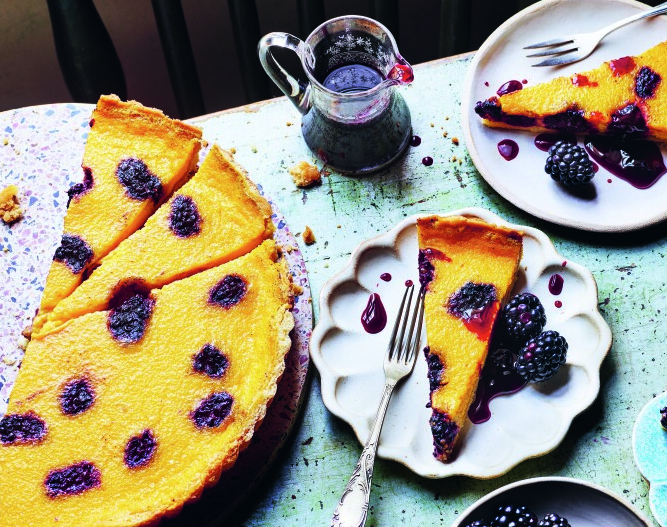
20 minutes plus chilling time
Serves 6-8 slices
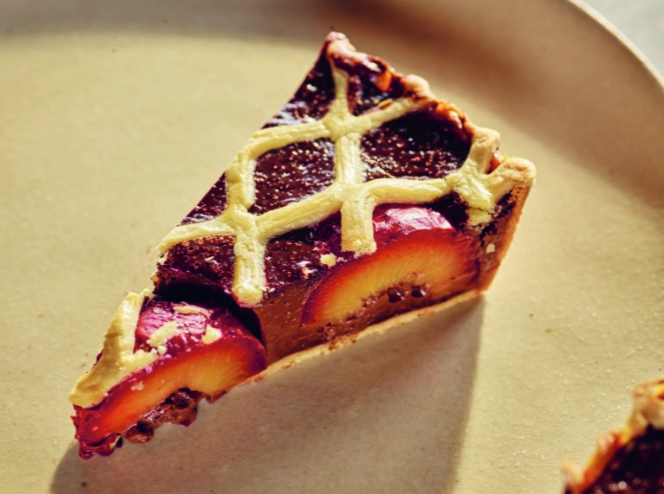
30 minutes
Serves 6-8
Great British Food Awards
Tasting videos

3 of the best biscuit and tea pairings
Treat yourself by discovering three decadent ways to match award-winning biscuits with tea

